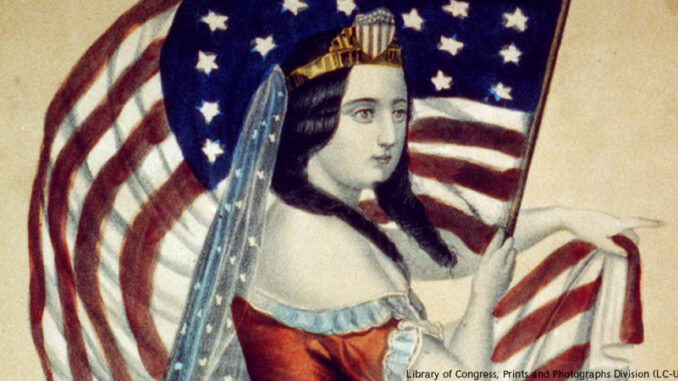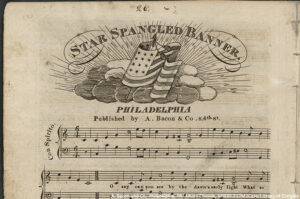
When was the last time you sang the Star Spangled Banner? If you attend a lot a sporting events, probably a lot, or maybe the start of a fireworks show this past 4th of July? When was the last time you thought about its origin? The symbols that define America’s national identity–the bald eagle, the Statue of Liberty, and the stars and stripes–are so ingrained in our lives that it is easy to take them for granted. With the 200th anniversary of the inspiration of our national anthem, btw takes a look back to the birth of the ultimate theme song.
Bombs Bursting in Air

The Revolutionary War (1775-1783) was when the United States won its independence from the Kingdom of Great Britain. However, a series of tensions between the two countries lead to the lesser-known military conflict, the War of 1812 (1812-1814). Some historians consider it the “Second War of Independence.” While the United States had made many advances against the British in the early days of fighting the War of 1812, Britain escalated its efforts and launched an aggressive attack on September 13-14 during the Battle of Ft. McHenry, located in Baltimore, Maryland.
Attorneys Francis Scott Key and John Stuart Skinner were hired by the government to negotiate with British officers over the release of prisoners. Over the course of their dealings, Key and Skinner became aware of the plans for the military maneuver on Ft. McHenry. As a result, they were held captive on a boat in Baltimore Harbor until after the battle was over. The fighting persisted for 27 hours, with more than 1,500 cannonballs fired. In the morning of September 14, Key witnessed the raising of a large United States flag (replacing the smaller one flown during the battle). Awed, Key, who considered himself an amateur poet, wrote a poem on the back of a letter he found in his pocket. He titled it, “Defense of Fort McHenry.”
The Broad Stripes and Bright Stars
A year before the Battle of Ft. McHenry, the military commissioned experienced flag maker Mary Young Pikersgill to make two flags. The first was to be “so big that the British would have no trouble seeing if from a distance.” The other was a storm flag, common of that era, to be used in inclement weather. The final measurement of the bigger flag was 30 x 42 feet, while the smaller was 17 x 25 feet.
Legacy

The poem: It was Key’s brother-in-law who noticed that the words of the poem fit well in time with a popular drinking song called “To Anacreon in Heaven.” The music and lyrics went what we would call “viral” today, with seventeen newspapers across the country publishing the song. President Woodrow Wilson asked the Bureau of Education to compose an official arrangement. Included in that group was the famous bandleader, John Phillip Sousa (who penned another famous patriotic song, “Stars and Stripes Forever.” Key’s song would eventually become the national anthem of the United States, but not until an act of Congress in 1931.
The flag: Georgiana Armistead, daughter of the commander at Ft. McHenry, ultimately ended up in possession of the great flag. Over the years, she obliged many requests for a cutting of the fabric for people to keep as souvenirs (including one of the fifteen stars, given to a forever unnamed, “official person.”) A descendent of the Armistead family eventually donated it to the Smithsonian, where it now resides and has undergone a massive restoration.
While the details of the War of 1812 are over-shadowed by other events in U.S. history, the national anthem continues to resonate as a symbol of pride and patriotism.
Dig Deeper For more information about the efforts to restore this national treasure, visit the Smithsonian Institute’s Web site on the famous document.
Related Links and Poll
- The University of Maryland Terrapin football team will wear special Star-Spangled Banner themed uniforms this Saturday to mark the anniversary of Key’s poem. Check out photos of the uniforms below.
- What do you think about about the uniforms? Examine the photos and then vote on if you like the uniforms.

